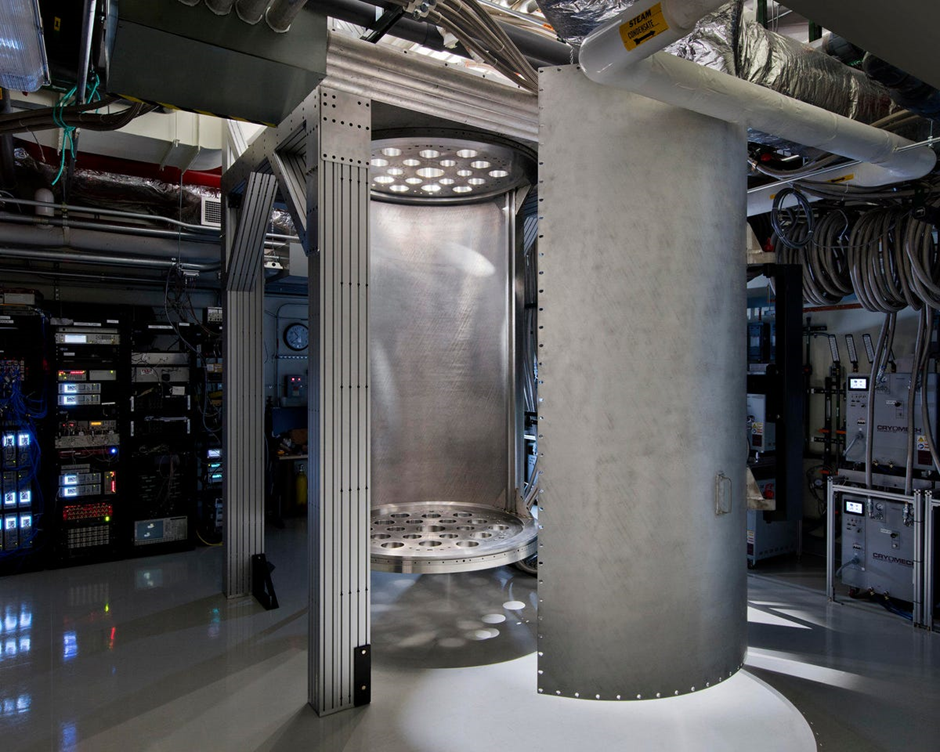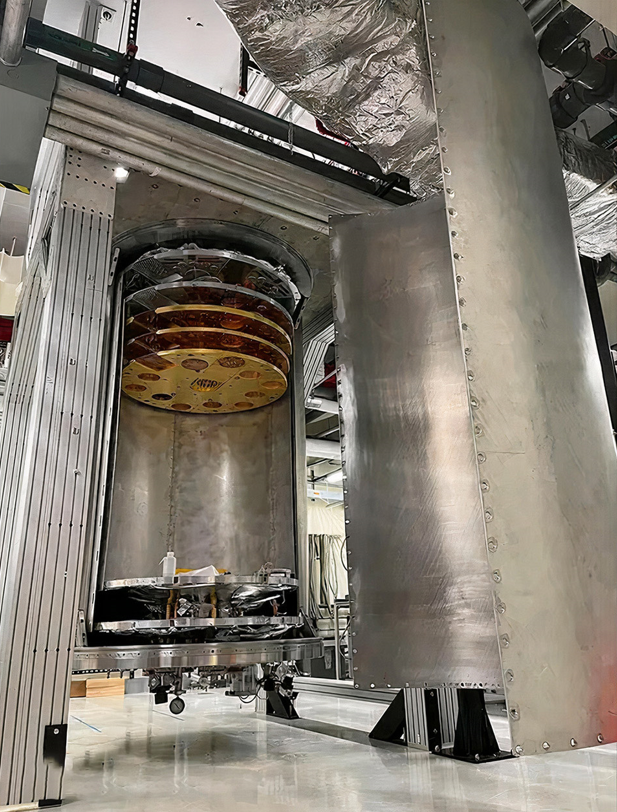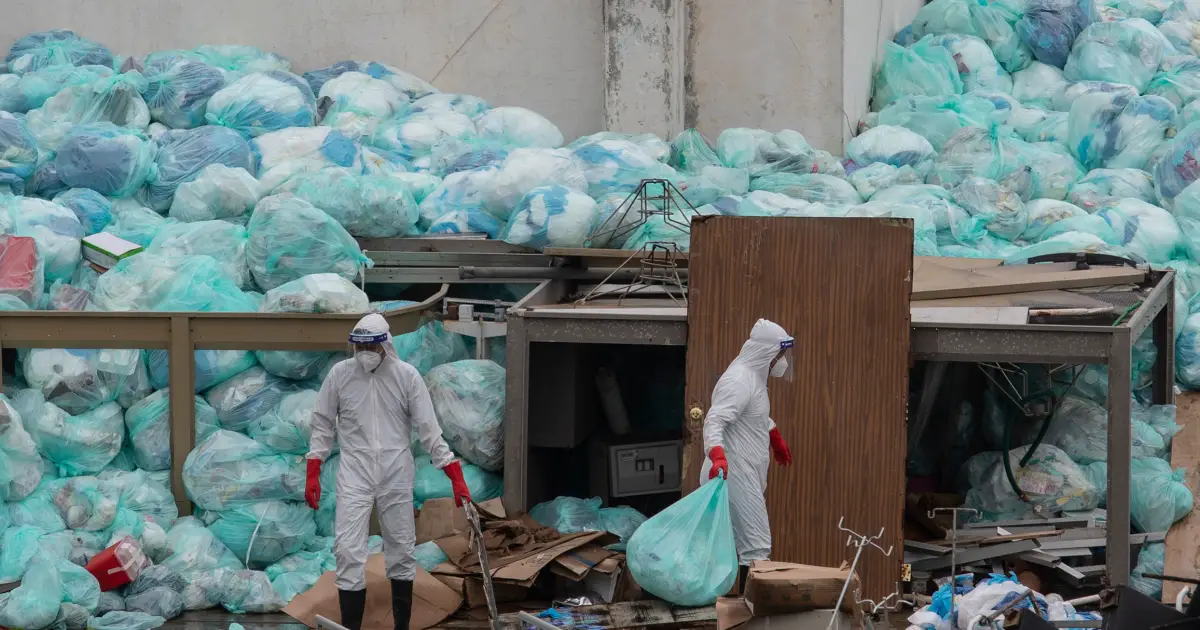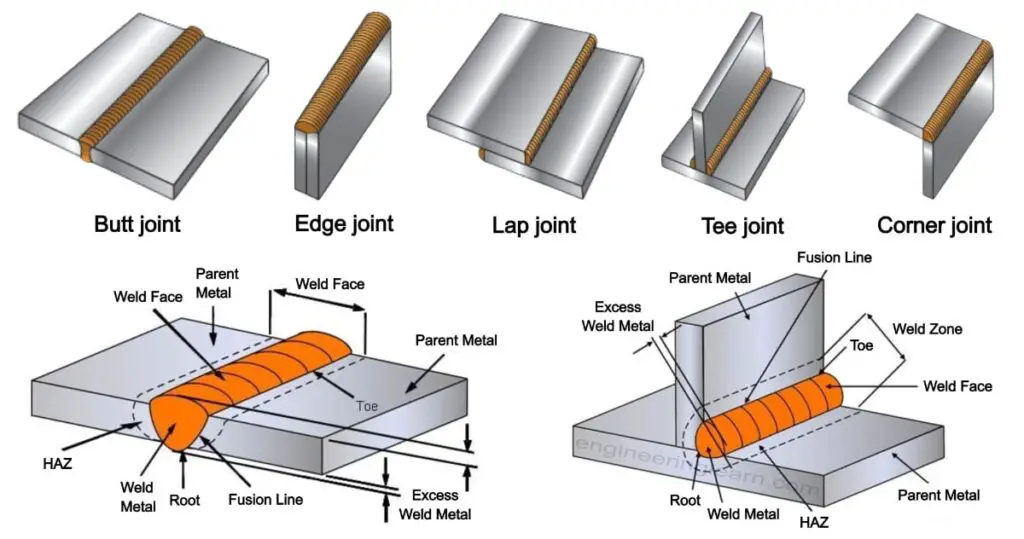We learn new things by pushing the boundaries of our understanding of the world: we investigate the highest and lowest energies, the smallest and largest objects, and the coldest temperatures.
However, conquering these frontiers is no easy task, and it usually necessitates the creation of novel devices that test the limitations of current technology. That’s why IBM has built the world’s largest dilution refrigerator by experimental volume.
These advancements in technology will help in enhancing our scientific knowledge and will fuel our quantum experiments.
So let us understand more about the project in the article below.
What is a dilution refrigerator?
With no moving parts in the low-temperature area, a Dilution refrigerator is a cryogenic device that continuously cools to temperatures as low as 2 mK. The heat produced during mixing helium-3 and helium-4 isotopes serve as the cooling power.
History?
In the early 1950s, Heinz London conceived the dilution refrigerator, and in 1964, researchers at Leiden University successfully built and tested one. The first 3 He-4 He dilution refrigerator was constructed by Henry Hall in 1965 at the University of Manchester.
In 1966, the Oxford Instruments plant in Osney Mead, Oxford collaborated with Heinz London to create the first commercial dilution refrigerator. Dilution cooling beyond previously observed temperatures for 3 He was made possible by the 200 mK base temperature.
Throughout the course of its half-century of existence, the dilution refrigerator has seen significant improvements in speed, durability, and 3 He efficiency. Nowadays, reaching temperatures below 4 mK is as easy as pushing a button, and it doesn’t even require liquid helium cooling.
First conceived by Heinz London in the early 1950s, the dilution refrigerator was first achieved experimentally in 1964 at Leiden University’s Kamerlingh Onnes Laboratorium. In this article, Zu et al. provide a comprehensive overview of the topic of dilution refrigeration.
Dilution refrigerators have been used for decades to cool down devices as small as semiconductors to as heavy as 3-ton gravitational wave detectors, reaching temperatures in the milliKelvin (mK) range.

These freezers have been used in conjunction with superconducting magnets with field strengths of up to 50 Tesla (T) to research exotic superconductors.
Four types of DR are described: the classical DR, Joule–Thomson (J–T) DR, dry dilution, and no-gravity dilution.
Currently, dilution refrigerators are used by scientists trying to realize quantum computers, search for the hypothesized Majorana particle, and study many other novel quantum properties.
Limitations of regular dilution refrigerators
Current dilution refrigerators have limitations in terms of the scale of the quantum physics experiments that can be housed within them, the number of input/output ports, and the cooling power that can be applied.
Furthermore, dilution refrigerators have no inherent lower temperature limit. Still, for reasonable reasons, we have to cap the temperature range at around 2 mK.
When the temperature of a circulating fluid is decreased, the viscosity increases, and the thermal conductivity increases as well. The mixing chamber’s inlet and exit tubes’ diameters should be T3 m to limit viscous heating, and their lengths should be T8 m to achieve low heat flow.
Therefore, increasing the diameter by a factor of 8 and the length by a factor of 256 will result in a temperature reduction of 2.
So, we need a 214x (or 16,384x) increase in volume. The volume of one cm3 at 2 mK would expand to 16,384 cm3 at 1 mK. These machines would have to be made much larger and more expensive. When it comes to cooling down to temperatures below 2 mK, nuclear demagnetization is a potent alternative.
Project Goldeneye
Internally known as “project Goldeneye,” the super-fridge is a proof-of-concept dilution refrigerator designed to keep the next generation of quantum experiments cool.
IBM explained that the so-called Goldeneye project is not really compatible with their in-house quantum processors.
Goldeneye may not have been intended for use with any of the IBM Quantum processors that IBM is now working on, but creating it gave them valuable lessons about how to deal with these difficulties.
As opposed to conventional refrigerators, which have a volume of between 0.4 and 0.7 cubic meters, the experimental volume of the super-fridge is 1.7 cubic meters, indicating it can cool a volume more than three standard residential refrigerators to temperatures lower than outer space.
For cutting-edge physics experiments and, perhaps, to run huge quantum computers, these temperatures are necessary.

Goldeneye also features a modular design and a special jib crane that make it so one day it could be used by a lone operator and even remotely.
The multinational tech company also said that they are now preparing to move the Goldeneye to their IBM Quantum Computation Center, which is located in Poughkeepsie, New York.
How to build the world’s largest, coldest fridge?
If we want to understand and manipulate quantum effects, we need access to the temperature zone in which they manifest most strongly: near absolute zero, or 0 Kelvin (K).
Dilution refrigerators are experimental cryogenic devices that use a combination of the helium isotopes helium-3 (He-3) and helium-4 to cool a volume of space to the milli-Kelvin (mK) domain (He4).

Dilution refrigerators conduct this cooling by removing heat from the helium isotope mixture in several stages before circulating and diluting He-3 into the He-3/He-4 mixture with vacuum pumps.
Wet systems, like those used in dilution refrigerators until recently, start with something already cold, such as liquid nitrogen or another cryogenic fluid.
Modern refrigerators are typically “dry,” meaning they use a mechanical component called a cryo-cooler to produce the initial 50 K and 4 K temperatures necessary for pre-cooling the helium mixture.
These machines are cutting edge, therefore scaling them will be difficult.
Design and construction
In order to maximize experimental capacity while decreasing background noise and obtaining the temperatures needed to cool experimental quantum
gear, Project Goldeneye employs a completely new design for the frame and cryostat, the primary, barrel-shaped component responsible for the cooling.

The modular layout facilitated the work of a small team of IBM engineers in carrying out prototyping, assembly, and disassembly. Larger cranes and ten or more technicians may be needed to set up and take down other types of dilution freezers.
The cryostat’s clamshell design allows the exterior vacuum chamber to expand laterally, providing easy access to the inside components without requiring the removal of the outer shell.
With the support of an open-source visualization platform, the fridge in Goldeneye’s completely automated system, which can also be monitored remotely, can one day perhaps be operated by just one person. Currently, most dilution refrigerators in use require a team of operators to function properly.
Internally, the cryostat may accommodate a total of ten plates, five “normal” units on top and five inverted units on the bottom, for attaching components in either half of the device.
Additionally, it has space for up to six separate refrigerators for dilutions, enabling close to ~ ten mW at 100 mK cooling power and over 24 W of cooling power at 4 K temperatures.Finally, the 6.7 metric ton total system weight aids in vibration damping, eliminating the need for additional, conventional dampening procedures.
First and foremost, it actually does what it’s supposed to. IBM engineers have completed the final characterization necessary to install a qubit chip after only three years from the project’s conception to our recent 25 mK milestone.
When it comes to practical quantum computing, why is a super-fridge absolutely required?
If you want to observe quantum phenomena in superconducting qubits, you’ll need to chill them to temperatures of about 10 to 15 millikelvin. Their optimal performance depends on being stored at such low temperatures.
The use of superconducting qubits in quantum computing is enabled by dilution refrigeration technology, which has been around for quite some time. The hardware and infrastructure needed to support one type of qubit may be vastly different from that needed to support another type of qubit.
It was around the year 2010 when cryogen-free dilution refrigerators first became popular. Unlike traditional refrigerators, these didn’t need daily transfers of liquid cryogenic helium.
The world began transitioning to these reliable cryogen-free “dry” dilution refrigerators around 2010, allowing for superconducting qubit experiments to be conducted for much longer periods of time with no interruption.
Demonstration
This experiment measured qubit frequencies and coherence times, or how long qubits can keep quantum information coherent, to illustrate Goldeneye’s performance from the perspective of a qubit.
IBM Team was able to reproduce coherence times of around 450 microseconds, similar to those measured on other commercial dilution refrigeration systems. They did not observe a decrease in the qubit’s performance despite the different internal environment and much larger experimental volume.

And despite its size, Goldeneye proved to be efficient.
Compared to today’s large-scale dilution refrigerators1, it doesn’t need as much room to store the same quantity of quantum hardware.
What were the technical challenges faced by the team?
During working on the project, they began to think further ahead and very immediately realized that they would require a significantly larger cryogenic support system to ever cool down between one thousand and one million qubits.
This was simply owing to the massive bulk that was required to house not just all of the qubits but also all of the auxiliary, cryogenic, microwave electronics. These included cables, filters, attenuators, isolators, and amplifiers, among other components.
It became very clear that a new way of thinking in terms of the design would be required, and they started coming up with different form factors for how to effectively construct and cool down a behemoth such as the super-fridge. This was done in response to the fact that it became very apparent that a new way of thinking in terms of design would be needed.
Some of the challenges they had were purely infrastructural, such as how they were going to find a space in the building big enough to start this project and where they would find the capabilities to work with really large pieces of metal.
The development of Goldeneye, the world’s most advanced refrigerator, continues apace, with completion expected in 2023. It’s an important step toward the ultimate goal of expanding the capabilities of quantum technology.
As the company continues to execute on the roadmap it announced in September, they are pleased to share that they achieved a Quantum Volume of 128 in November and are working towards improving the quality of their underlying systems in order to debut their 127-qubit IBM Quantum Eagle processor later this year.

In the near future, IBM is poised to make exciting developments with its entire technology stack, including software and control systems. At IBM, they are working toward a complete set of broad innovations and breakthroughs.
What will quantum computing mean for the world in the long run? How will it be a game changer?
Quantum computing will vastly broaden the types of problems the team will address, and the technology offers a new form of computation that the company expects to work in a frictionless fashion with today’s classical computers.
From the chemistry of new materials and the optimization of everything from vehicle routing to financial portfolios to improving machine learning, quantum will be an integral part of the future of computing, and IBM is proud to be laying the foundation for a future of discovery.
However, having access to Goldeneye allows them to consider many different ways of scaling up their quantum processors even beyond 2025 and will help them to further conceptualize the cryogenic infrastructure of tomorrow’s quantum data centers.
Conclusion
Amazingly, we learn something new every time we push a technological boundary. The IBM team has challenged the limits of cryogenic science by constructing Goldeneye, and the world has learned about the potential for large-scale quantum experiments thanks to their work.
Science and knowledge will grow thanks to the lessons acquired from this study, which will be used in a future IBM Quantum System.





